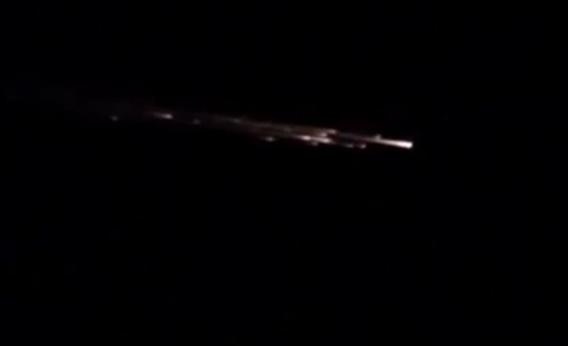Create a free profile to get unlimited access to exclusive videos, sweepstakes, and more!
Satellite Re-Entry Surprises Hawaii

Folks in Hawaii got a shock—or a thrill, depending on how much they knew about what they were seeing—when a very bright and dramatic “shooting star” blew across their skies on Monday.
That’s one example of many (one I saw had a lot of swearing in it, which doesn’t surprise me at all).
Was it an asteroid? A sign of the Apocalypse? Superman?
Nope. It was the re-entry of Cosmos 1315, a Soviet-era satellite launched in 1981. The giveaway for me that this was a satellite and not a natural meteor was how slowly it was moving. Typical meteor speeds are many dozens of kilometers per second, and they zip across the sky in a second or two. Satellites orbit at about 8 kilometers per second, and can take a minute or more to clear the horizon. Also, satellites tend to break apart as the pressure and heat of re-entry take their toll, and you can see that’s what’s going on in the video.
Also, the Aerospace Corp. put the re-entry track right over Hawaii at just the right time. Seems pretty cut and dried.
I’ve seen hundreds of meteors (probably thousands), and only one satellite re-entry, a Russian booster that burned up over the U.S. East Coast back when I was in grad school. It was pretty awe-inspiring, moving slowly and gracefully across the sky, with bits falling off. A meteor usually stays in one piece unless it’s a really big one.
There are a lot of birds up there, and this stuff comes down all the time. Usually they fall over the ocean where no one sees them (the planet is mostly water, after all), but when they come down over populated areas we usually get lots of dramatic video and photographs.
Sometimes these can be a danger—ask this guy who lives downrange of a Chinese rocket launch site—but that’s extremely rare. Still, it’s something aerospace companies and national governments need to be concerned about, especially during test launches; debris from SpaceShipTwo came down in the Mojave after the test vehicle crashed in 2014, narrowly missing bystanders.
But what this tells me is—and stop me if you’ve heard this before—you need to look up! You never know what’s up there … and what’s coming down.
Tip o’ the heat shield to David Dickinson.*
*Correction, Sept. 2, 2015: This post originally misspelled David Dickinson’s last name.


























